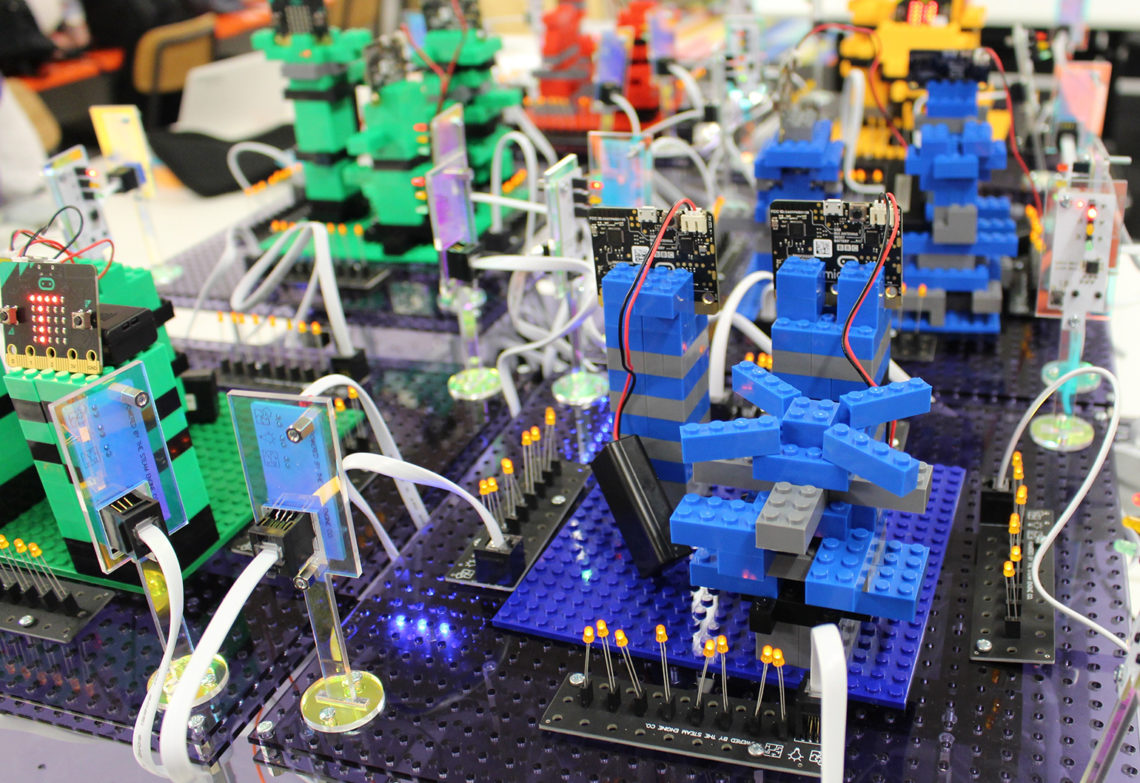When chemical engineering student Marissa Thomas realised schools didn’t have access to affordable robotics kits, she decided to make her own.
It was while working for not-for-profit technology workshops program Robogals that Marissa Thomas realised there was an obvious missing piece in engineering education for schools.
The Monash University chemical engineering student was running workshops to inspire girls to pursue careers like engineering. And it was working. But there wasn’t a lot for the students to do after Robogals left.
“The education kits that we were using in the classroom were really expensive robotics kits,” Thomas said.
“Particularly public schools didn’t have access to [the kits]. I wanted to create a long-term solution to this problem.”

Thomas launched her start-up The STEAM Engine Co. and designed “Violet”, a cost-effective and hackable robot to teach coding in Australian schools.
The STEAM Engine Co. has since developed two more digi tech kits; the IT-specific ‘bumble-B’ robot and ‘STEAM City’, a race to design a city to win an engineering contract.
Thomas and her team also run engineering workshops for school and university students based around the kits.
The future is female
When The STEAM Engine Co. first launched, the workshops were aimed at both boys and girls. But over time, Thomas says her focus shifted to girls.
“It was just so much more fulfilling when you saw the impact we made on the young girls,” she said.
“And the difference in impact has been consistent across our workshops regardless of their school or age.”
Most of The STEAM Engine Co.’s facilitators are also female.
“There’s something really empowering about being in a room full of women,” Thomas said.
“It’s like this sense of sisterhood and you can’t get enough of it — you can’t shake that feeling.”
Another driver was reports that the number of women graduating with degrees in engineering has fallen in recent years.
“It’s definitely an issue that’s still quite prominent,” Thomas said.
Thomas herself almost didn’t choose engineering. A high-achieving student, she loved maths and science growing up but began to hate it in her final years of high school. She was headed instead for a law and arts degree at university.
“I wanted to change the world and I thought ‘I love debating and public speaking, I’d love to pursue something like diplomacy’,” Thomas said.
“But my dad — our family’s full of engineers — he said, ‘look, just do engineering for a year and see how you go’. That’s exactly what I did.”

Monash University Dean of Engineering Professor Elizabeth Croft said The STEAM Engine Co. is helping to educate students to understand that engineering is about creative design.
“It isn’t just paper-based, it isn’t just math and physics for the purpose of math and physics,” she said.
“It’s creative and uses the physical principles about how the world works to generate new designs.”
Croft said it’s this creative side of engineering that really inspires kids. She believes it’s important to empower girls in particular with tech, because they’re often not encouraged to pursue engineering careers.
“So, initiatives like Marissa’s, which actually get into the heart of that and address the root cause problems, are pretty exciting,” she said.
Challenging students
One of The STEAM Engine Co.’s first workshop participants was Monash University environmental engineering student Casey Barczynski. She took part in a four-hour challenge to build STEAM City over two nights in March.
“It’s one of my favourite things I have done at uni so far,” she said.
 “It was such an amazing experience and it was so fun and fresh and new.”
“It was such an amazing experience and it was so fun and fresh and new.”
Barczynski, who is studying a double degree with science, says the workshop tipped her towards wanting to pursue the engineering side of her degree when she graduates.
“I’ve done my fair share of group projects but that was the first time that I realised really how invaluable teamwork is,” she said.
“It opened up the whole [idea] that engineering isn’t just technical; it requires people skills as well.”
Thomas is due to graduate at the end of 2019 and plans to focus full-time on The STEAM Engine Co. for six to 12 months.
“I really wanted to work out in the chemical engineering industry,” she said.
“But the more I thought about it — I know I would regret not giving The STEAM Engine Co. a really good shot. Particularly with STEAM City, that’s a really interesting education kit that we’ve built that we haven’t seen anything like before.”
Croft said she is hugely proud of what the students have done.
“They have amazing drive and great ability to marry creative design with strong maths, physics, science — and communicate it well,” she said.
Croft says Thomas’ solutions are clever, innovative and very entrepreneurial.
“I’d watch that space in terms of what she’ll be able to do in the future,” she said.
Marissa Thomas’s three things girls need to get them into engineering
Confidence
Thomas believes high-achieving girls are particularly susceptible to losing confidence in their own ability to do maths and science when it gets hard. She said supporting girls to shift from a fixed mindset to a growth mindset can help.
An understanding of the people side of engineering
Thomas said many girls perceive engineering as maths and physics-intensive, without realising that top engineers need great teamwork and communication skills. She believes the people element of the profession can be a big selling point for girls
A crash course in spatial reasoning
Thomas says a lot of girls struggle with spatial skills, which can limit their confidence. She said the STEAM City kit is designed to give students a chance to practice 2D to 3D translation.
This article originally appeared as “Promoting robotics” in the April 2020 edition of create magazine.



